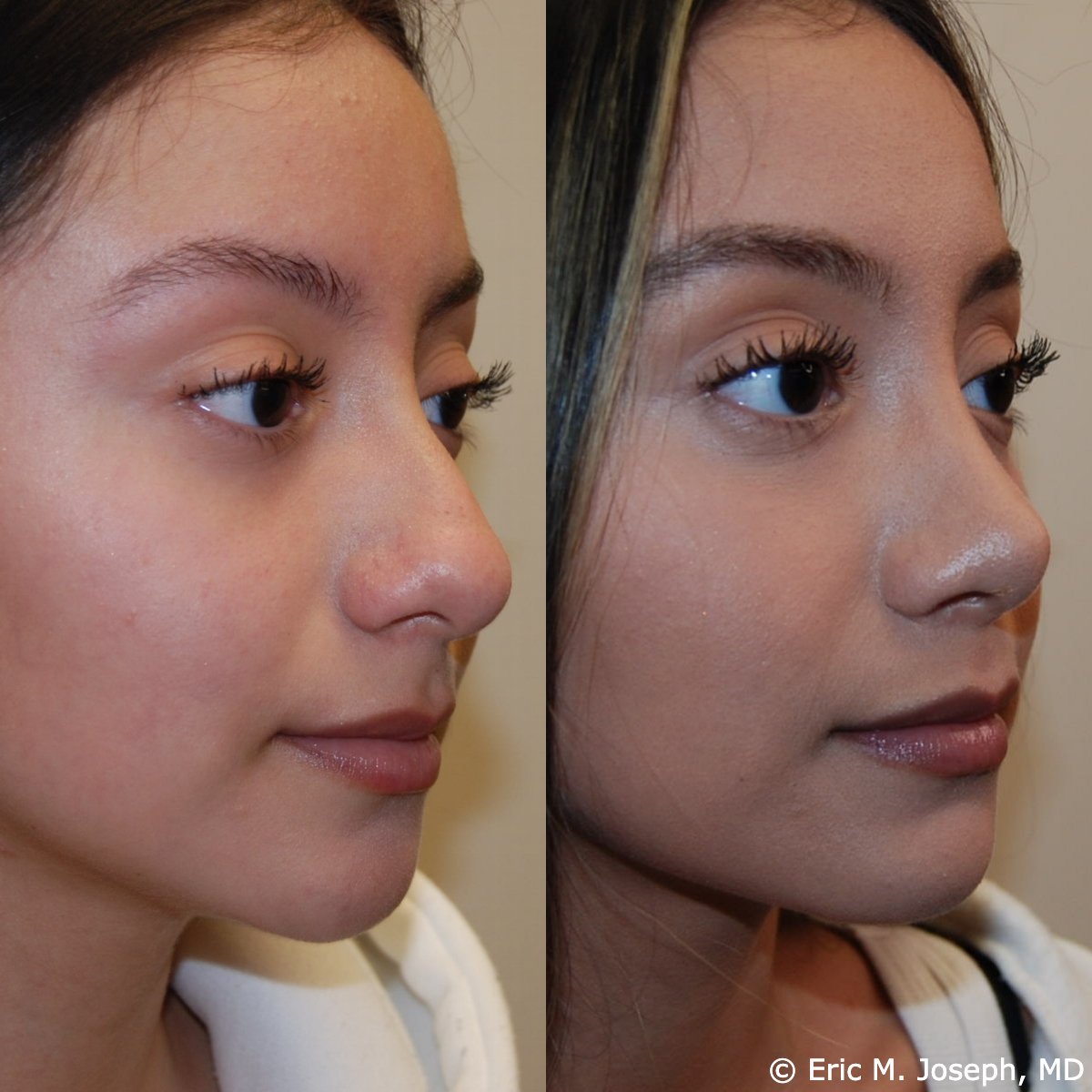






Rhinoplasty #265
Our beautiful 19 year old patient is seen 15 months following functional and cosmetic rhinoplasty surgery. She presented to our office with a nasusceptal fracture, a crooked nasal appearance, bilateral nasal obstruction, along with concerns about her dorsal hump and droopy nasal tip appearance. From a cosmetic standpoint, her profile was deprojected, and on front view, you can see a straight nasal appearance, and there is no further droopiness of her tip. From a functional standpoint, her severely deviated and fractured nasal septum was repaired, and she also required bilateral spreader grafts to repair her internal nasal valves. You can see a straighter, less distracting, and more feminine nasal appearance. And we are all thrilled that she is allowing us to post her results.




























